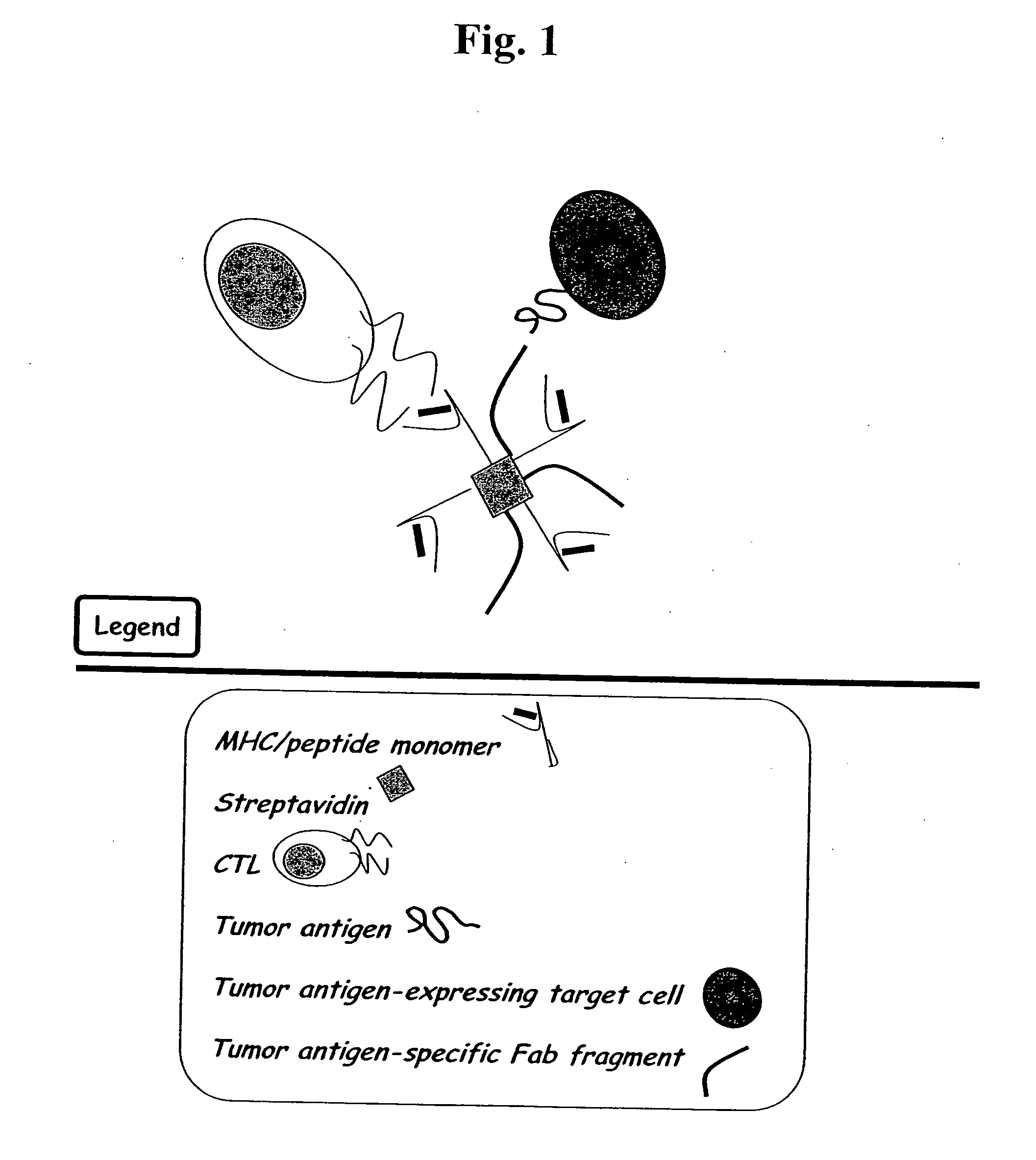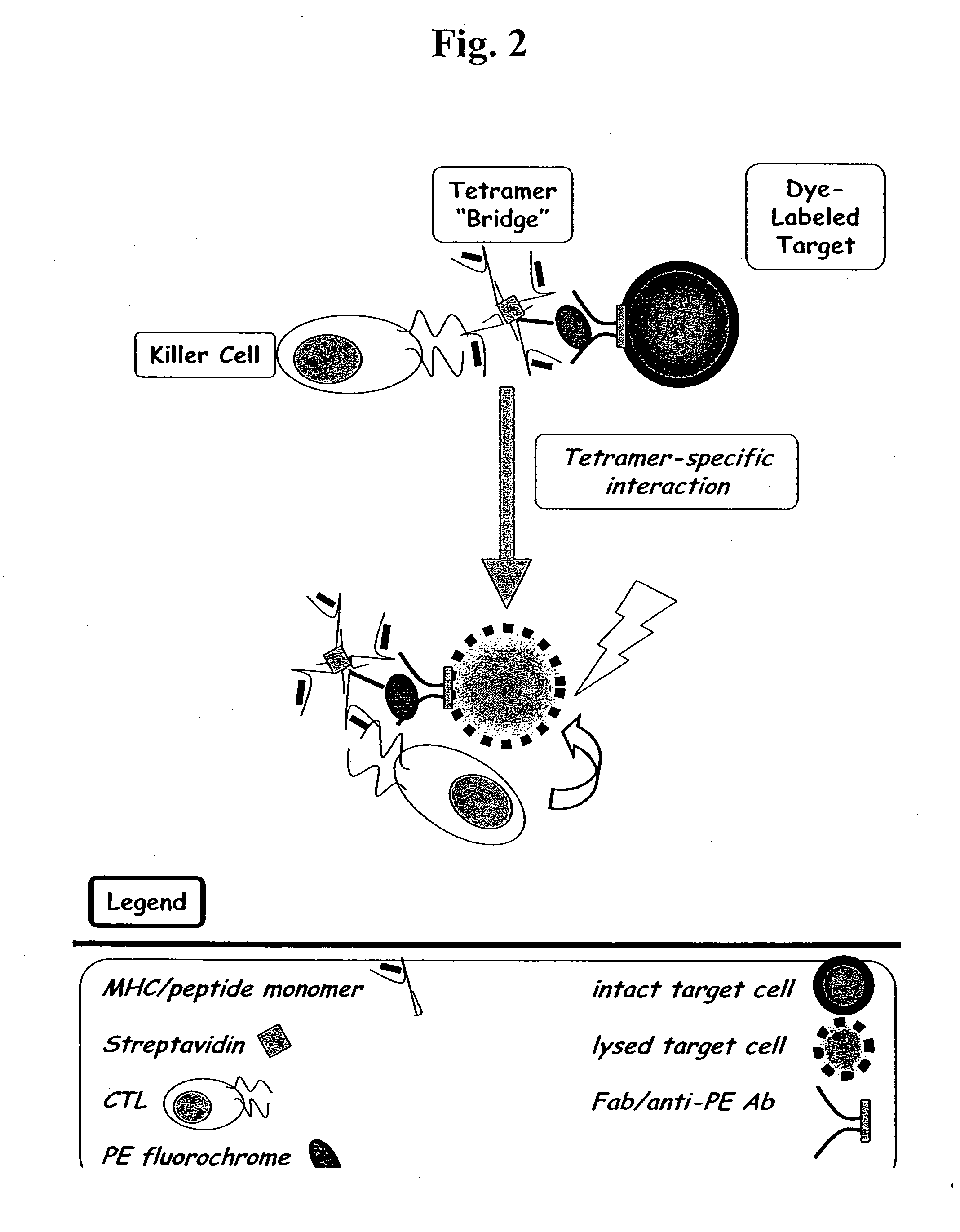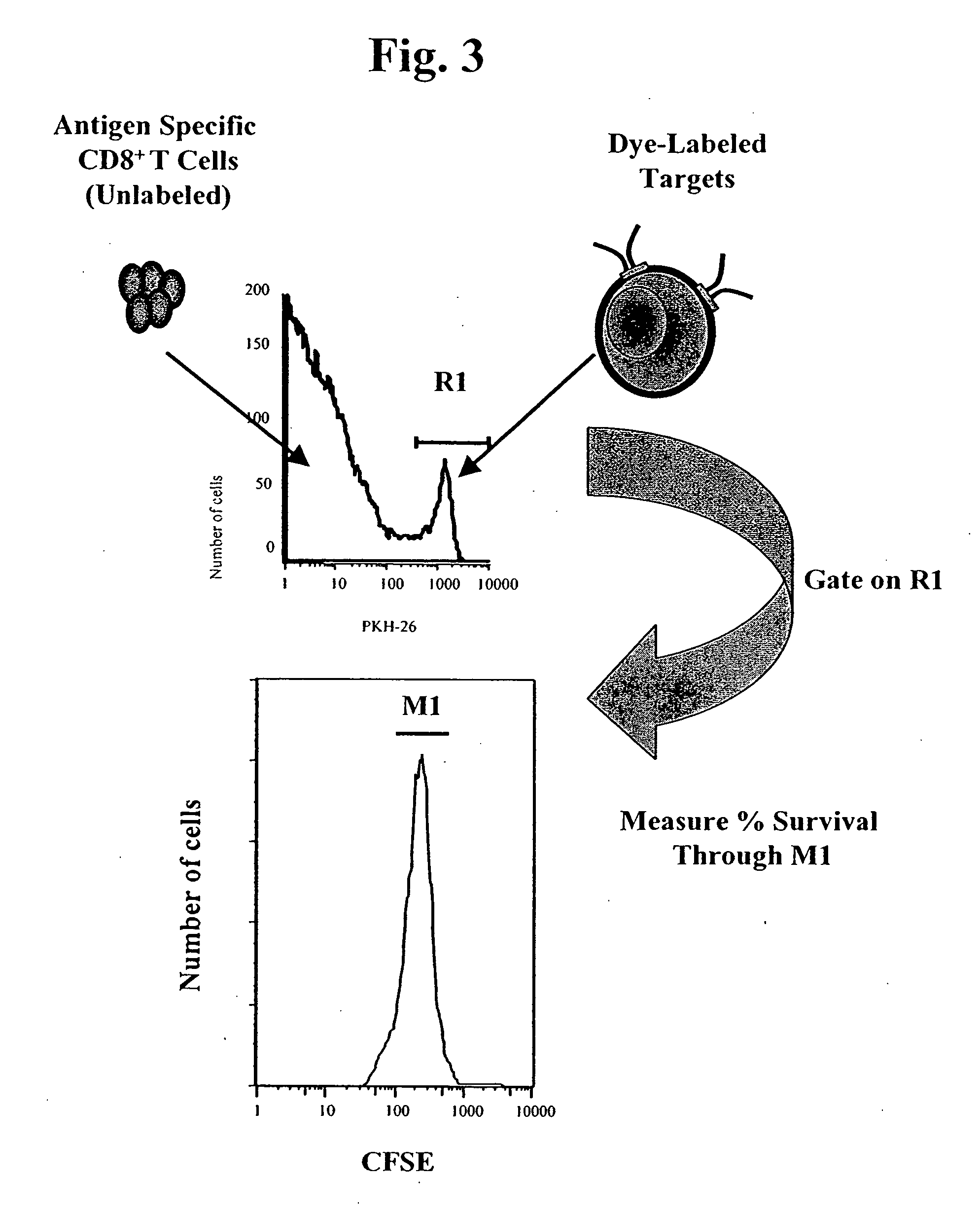MHC bridging system for detecting CTL-mediated lysis of antigen presenting cells
a ctl-mediated lysis and antigen-presenting cell technology, applied in the field of immunoassays, can solve the problems of time-consuming limiting dilution assay, inconvenient measurement of the magnitude of a cellular immune response, and the destruction of the target cell displaying the tcr, so as to achieve the effect of reducing the signal of the first detectable label, reducing the signal, and reducing the signal
- Summary
- Abstract
- Description
- Claims
- Application Information
AI Technical Summary
Benefits of technology
Problems solved by technology
Method used
Image
Examples
example 1
Materials and Methods
[0111] Reagents. Peptides used for in vitro stimulation of PBMCs (New England Peptide, Inc., Fitchburg, Mass.) throughout these examples were greater than 90% pure, as determined by mass spectrometry and reverse-phase HPLC analysis. Phycoerythrin (PE)-coupled iTAg® tetramers were commercially available (Beckman Coulter, Inc. Immunomics Operations, San Diego, Calif.).
[0112] Cell Lines. CD8+ CTL clone HA2FLU.3 and HA2FLU.5, specific for amino acids 58-66 of influenza A matrix peptide (GILGFVFTL) (SEQ ID NO:1) in the context of HLA-A*0201 (Bednarek), and CTL clone B7 CMV.16, specific for amino acids 417-426 of CMV pp65 peptide (TPRVTGGGAM) (SEQ ID NO:2) in the context of HLA-B7 (Wills, M. R., et al., J Virol 1996 November; 70(11):7569-79) were generated as described below.
example 2
[0113] Generation of CD8+ CTLs. PBMCs obtained from normal, healthy volunteers were isolated by centrifugation over Histopaque® 1077 medium (Sigma Diagnostics, St. Louis, Mo.). IM-9 cells and P815 cells were obtained from ATCC and passaged weekly in RPMI-FC(RPMI supplemented with 2 mM L-Glutamine, 1M HEPES, 1 mM Sodium Pyruvate, 0.1 mM non-essential amino acids (all from Invitrogen Life Technologies, Carlsbad, Calif.) and 10% final concentration of Fetal Clone (HyClone Laboratories, Logan, Utah)). For antigen presenting cells (APCs), ten million cells were resuspended in RPMI-AB (RPMI supplemented with 5×10−5 M 2-mercaptoethanol (Sigma, St. Louis, Mo.), and the supplements listed for RPMI-FC, except that human serum (10% final concentration, Valley Biomedical, Winchester, Va.) was used instead of Fetal Clone), formalin-fixed staphylococcus aureus Cowan (final concentration of 0.0017%, Sigma Diagnostics), and 500 ng IL-4 (BD Pharmingen, San Diego, Calif.). Cells were seeded at 4×106 ...
example 3
[0116] Tetramer Staining. CTLs were harvested, counted and resuspended in PBS 0.1% BSA at various concentrations in a final volume of 100 μl. Ten microliters of specific or irrelevant tetramer (iTAg® reagents, Beckman Coulter Immunomics, San Diego, Calif.) was added, and samples were incubated for 20-30 minutes at 4° C. Samples to be used for phenotypic analysis were co-stained with CD8-FITC during this incubation step. Samples were resuspended in flow cytometry buffer (azide and BSA) prior to analysis on a Becton Dickinson FASCcaliber® or a Beckman Coulter EPICS XL® flow cytometer.
PUM
 Login to View More
Login to View More Abstract
Description
Claims
Application Information
 Login to View More
Login to View More - R&D
- Intellectual Property
- Life Sciences
- Materials
- Tech Scout
- Unparalleled Data Quality
- Higher Quality Content
- 60% Fewer Hallucinations
Browse by: Latest US Patents, China's latest patents, Technical Efficacy Thesaurus, Application Domain, Technology Topic, Popular Technical Reports.
© 2025 PatSnap. All rights reserved.Legal|Privacy policy|Modern Slavery Act Transparency Statement|Sitemap|About US| Contact US: help@patsnap.com



